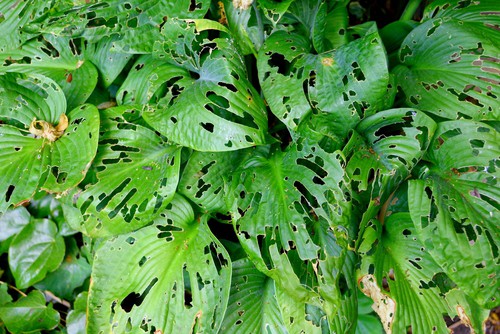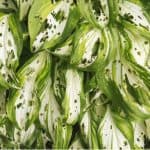Last updated on March 20th, 2022
Our site is reader supported, this means we may earn a small commission from Amazon and other affiliates when you buy through links on our site.
Hostas are well known for their foliage. They can live for a very long time if you care for them properly and are very easy to maintain. You can choose from a range of plants in terms of leaf shape, size and colour. However, you should realistically search for varieties that do best in pots, and which thrive in the level of sunlight you can provide although most prefer a more shady spot in the garden and not full sun. If you need miniature varieties to grow in smaller containers, you can choose from our favourite varieties such as ‘Pandora’s Box’ or ‘Blue Mouse Ears’, both of which are worth considering, but most will grow happily in pots.
When you are growing Hostas in containers, most of them are sold in pots ready to be transplanted into a slightly bigger pot.
Choosing a Pot for a Hosta
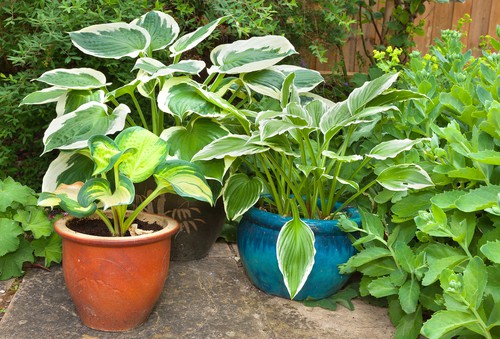
When planting your Hostas in containers, you want to find a pot that is bigger than than the pot its currently in, but not too large because this can lead to root rot. Look at the labels for the plant that you’ve purchased to figure out what the ultimate height and spread will be. In general, you can put Hostas in larger containers that are between 30cm and 45cm in diameter, as long as the containers have good drainage. Drainage holes are key so don’t get caught out by forgetting about them. If you look at the bottom of the pot you are using and if there are insufficient holes you can always drill more.
A few tips from us about drilling extra drainage holes. With ceramic pots, cover the bottom with some masking tape and then drill through this first because this will stop the drill bit from slipping. If the container is made of plastic do not apply a great deal of pressure when drilling extra holes as this can cause the plastic to crack.
The Best Compost for Hostas
When growing in containers you want to use peat-free or loam-based potting compost only, such as John Inn potting compost, and then mix this with some multipurpose compost to help stop it becoming to wet and improve the consistency.
Planting a Hosta in a Pot
You can plant Hostas in containers at any time of year. However, it is best to avoid the middle of summer when the outside temperatures are highest (if possible) because it will quickly dry out the soil.
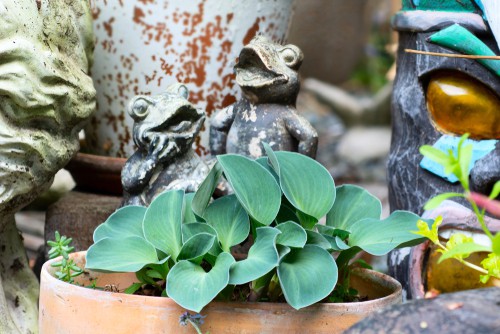
When you put your plants inside the containers you want the top of the root ball to sit at the same level as it does in the container in which it was purchased. This is true each time you repot them, which you will likely have to do every few years and divide the plants, which we have talked about in this article. Make sure that you water it well so that the soil has an opportunity to settle.
Watering and Feeding
Water regularly and feed with a multipurpose feed once a month
Hostas in containers need regular watering, especially during the summer otherwise they will dry out. You can tell when your plant is in need of extra water because the leaf margins will start to turn brown although you want to keep a close eye on them and water before this actually happens, so just check the surface of the soil regularly.
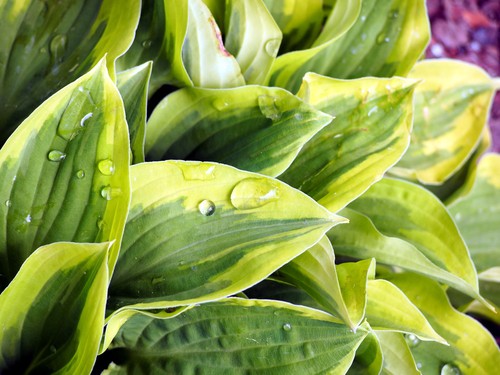
You should add a liquid feed once per month when the Hostas are in growing to help them along, especially if you have had them in pots for over 12 months because they can quickly start to become well-rooted. Container grown Hostas need general purpose liquid fertilisers, but they can also be fed with ericaceous feeds as they prefer a neutral to acidic soil anyone.
Caring for Potted Hostas over Winter
Hostas grown in containers are highly susceptible to water-logging. This means that during the winter you need to protect the containers from excess rainwater by placing them at the base of a fence or a wall to reduce the amount of rainfall they get. They naturally die back in winter so don’t require much watering at all. To protect the roots from frost you can try wrapping pots in lagging or fleece or keeping them in a greenhouse if you are lucky enough to have one.
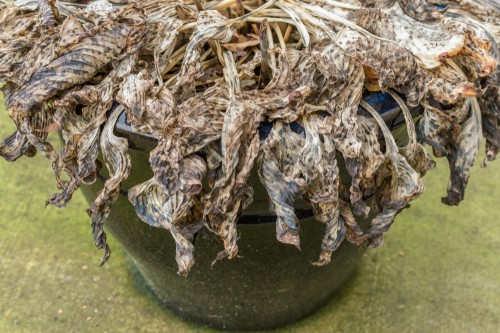
We recently reviewed some greenhouses here that we think are well worth considering.
Dealing with Slug and Snails
Slugs and snails are the biggest pest problem Hostas will face. However, in pots, they will not be as problematic if you take a few simple steps. You can set up beer traps near the pots so that the slugs and snails get caught in those instead. It’s also worth adding a layer of grit to the top of the pots as slug and snails tend to avoid slivering over grit. You can also get the copper tape you can stick around the pot which the slugs will not cross, this has proved very effective in the past.
